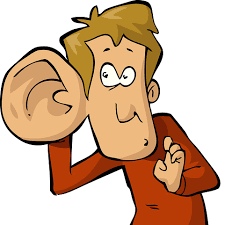Scuba Divers MUST look after their ears. I came across a very useful article published by DAN ALERT NETWORK. Makes for interesting and useful info. Please take time to read 🙂


Keeping It Clean: Reasons for Good Aural Hygiene
By Cameron A. Gillespie, M.D.
We can all agree that, before a dive, clean ear canals with normally equalizing middle ears is ideal. But what about the ears that need cleaning? They can give a diver grief.
Eardrum Rupture
A wax plug can trap air between itself and the tympanic membrane (eardrum). This in turn can cause an impossible-to-equalize situation, whether the diver is descending or coming up from a dive. This air trapping can cause a possible subsequent “explosive” tympanic membrane perforation, one that tears outward instead of the more common inward perforation with the in-pouring of water.
Vertigo
Also, a wax plug could prevent water from chilling one ear, while the other is naturally chilled by water filling the ear canal. This causes caloric vertigo, or dizziness, from temperature change from unequal chilling of the two ears. Finally, infection will more likely result if wax retains moisture and causes maceration, or softening of the skin, of the ear canal.
So, how should you clean your ears?
The Wrong Ways……………
Let’s start with how NOT to clean your ears. Avoid cotton-tipped swabs. I have often found the ends from cotton tip applicators in patients’ ear canals, the tip having separated from the shaft without the person knowing it. In a few days, this usually results in a severe ear canal infection; the cotton retains moisture and bacteria grow between the fibers.
No amount of oral or topical antibiotic will help with this: only removal of the cotton helps. The cotton should be identified and removed with a small right-angle pick or Shea forceps by a qualified physician, preferably using an operating microscope, which is designed for use with small tissue such as the inner ear. Do not ever attempt to do this yourself: those who do try this often force the cotton in farther, lacerating or tearing the ear canal or eardrum.
The cotton-tip applicators also bear a remarkable functional resemblance to the ramrod used in the 19th century to push the ball and patch (bullet and accompanying lubricant) down a rifle barrel. The ramrod effect of a swab pushes wax deeper into the ear. This usually makes wax removal more difficult.
The Right Way
So, how should you clean your ears? When you bathe, occasionally wash with a bulb syringe, warm soapy water and hydrogen peroxide solution. On a diving trip, use a mixture of half white vinegar and half rubbing alcohol after a day’s diving: this serves to cleanse and dry the ear canal, acidifying or changing the pH balance to make the area less prone to bacterial infection. This can also help prevent otitis externa (swimmer’s ear).
If you have a hard time getting water out of your ears, try a hair dryer. It’s a good idea to lift the ear upward and back to straighten the ear canal and then to blow warm dry air into the ear canal for five minutes.
Just remember that ear care is as basic and important as the care of any of your other diving equipment.
About The Author
Dr. Cameron A. Gillespie first learned scuba diving from a retired Navy diver, “John the Diver,” John Hoynaki, in 1960 and still has his original C-card. Many things have changed since that time, and Dr. Gillespie is currently a PADI Divemaster and a board-certified Otolaryngologist and Undersea and Hyperbaric Diving Medicine Specialist, working as a consultant to Divers Alert Network.